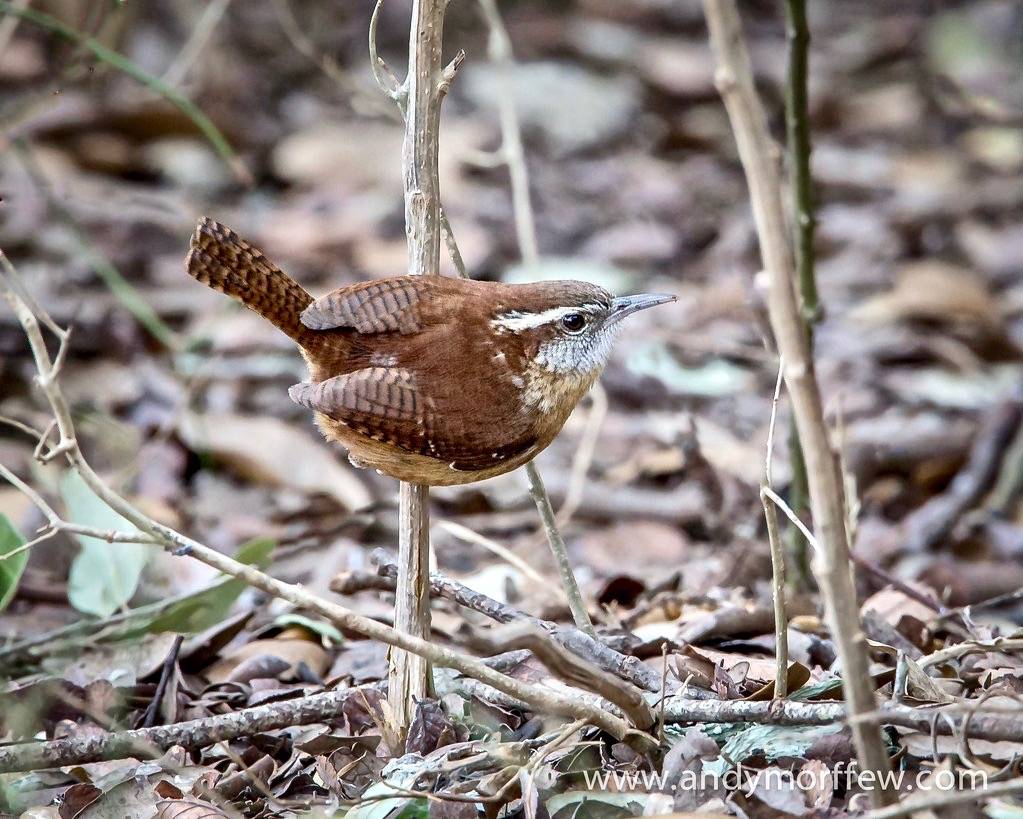Carolina Wren
The very loud and ventriloquial songs and calls of the Carolina Wren can be heard throughout Salter Grove. The wrens are harder to spot when they aren't singing because the earthy color of their plumage helps them remain hidden in the dense tangles of vegetation where they forage for insects.
Checklists uploaded to eBird from 2002 to 2018 only yielded 14 sightings during the thirteen year period. An upward trend became apparent with the start of regular weekly bird counts in the park in 2019. Seven sightings were recorded during 2019, 34 during 2020, and 43 during 2021. It is possible that the increase in sightings merely reflected more frequent visits by observers. However, no other bird species has shown such a steep increase of sightings in the park.
Wherever they occur, Carolina Wrens are observed as mated pairs and males will sing continuously to defend their territory year-round. The steep increase of sightings at Salter Grove suggests that additional pairs have moved into the park since 2019. As many as three males have been heard calling simultaneously from different corners of the park in 2021.
Historically, Carolina Wren were most common in southeastern United States and ranged down to northeastern Mexico. However, its northern range has reached southern Ontario in the past several decades as winters have become milder. The fragmentation of mature forests into woodland with dense shrubs has also increased its preferred habitat.















